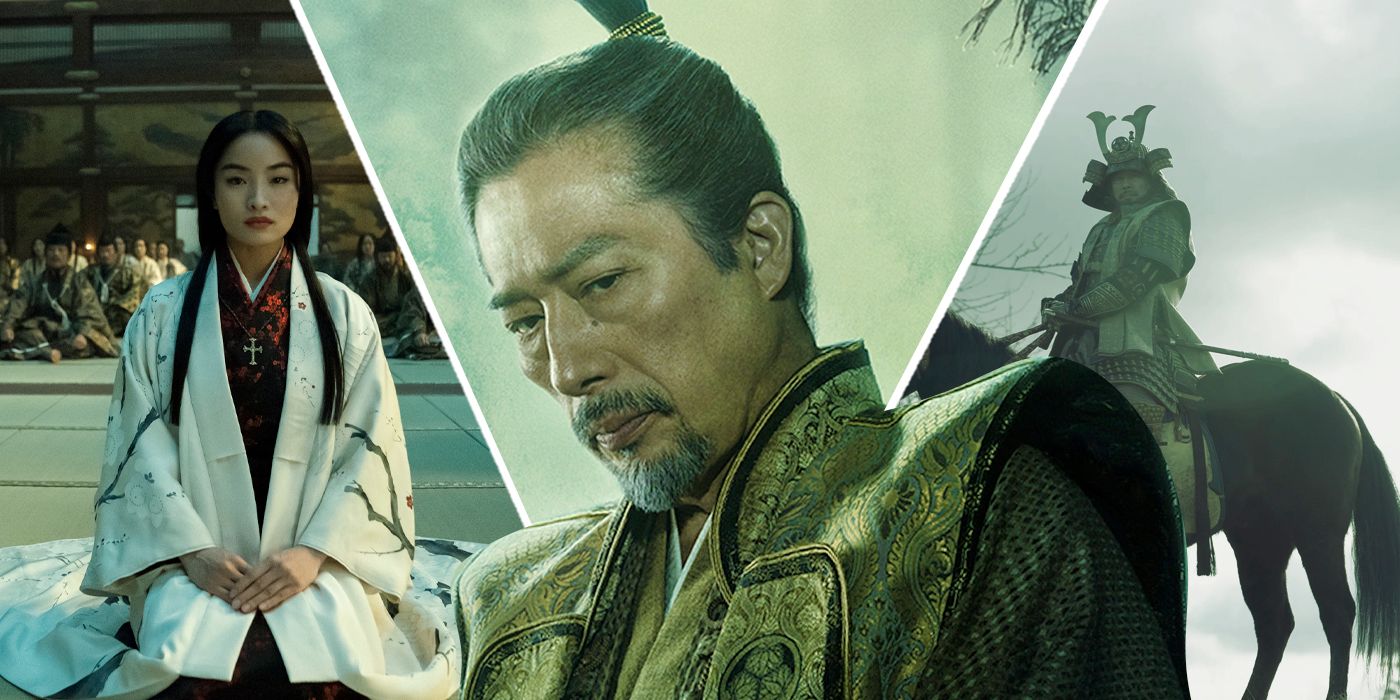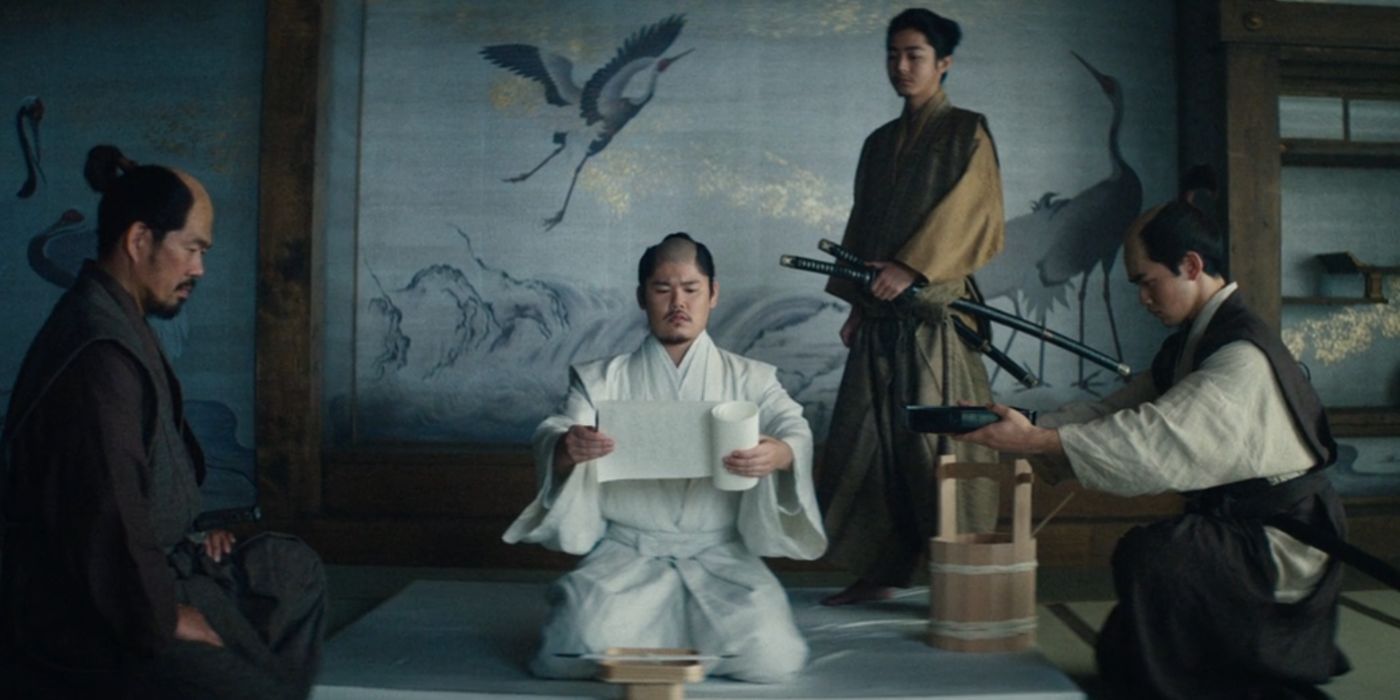FX’s Shogun is dark, violent, and bloody, but James Clavell’s book is much darker.

FX’s Shogun plunges its audience into an authentic representation of 17th-century Japan. Based on James Clavell’s epic novel of the same name, Shogun explores the shifting power dynamic as rivaling lords battle for authority after the death of Japan’s ruler. Caught in the middle is John Blackthorne (Cosmo Jarvis), an English sailor who shipwrecks off Japan’s coast, and becomes a political pawn and target of the Lords.
In its presentation of feudal Japan, Shogun is one of the darkest TV shows airing at the moment. The early episodes featured some truly gruesome scenes that shocked audiences. However, viewers will be even more shocked to learn that Clavell’s book is actually far darker than the series adaptation.
Death is a natural part of life to the native Japanese characters in Shogun. For a century before Shogun‘s story, Japan was in a state of constant war, and rivaling lords battled mercilessly for land, wealth, and power. As a result, the Japanese people of the time became accustomed to death, and their culture even embraced it as a ritualistic practice (more on that later). FX’s series is gruesome in its depiction of death and war. The biggest battles are yet to come, but audiences have already witnessed a man being boiled alive, a baby sacrificed, and a group of soldiers ambushed with cannons.
“Death is in our air. And sea and earth. It can come for us at any moment.”
– Mariko (Anna Sawai)
Audiences would be forgiven for believing that Showrunners Justin Marks and Rachel Kondo accentuated the violence for their series. TV is, after all, a visual medium. Action scenes are often exaggerated when they are adapted from novels. However, Clavell’s accounts of the violence in Shogun are actually far worse than in the series.
One of the most well-known and misunderstood aspects of feudal Japanese life is seppuku. Samurai committed this ritualistic suicide for a number of reasons, including as a method of protest, to restore one’s honor, and as a form of punishment. Seppuku is shown in FX’s Shogun when Tadayoshi (one of Lord Toranaga’s men) takes his own life and the life of his infant son to apologize to his Lord. The moment was shocking for audiences unaware of the very real custom. But seppuku actually features a lot more in Clavell’s book.
Across the various battles in the novel, soldiers from both sides occasionally commit seppuku to avoid capture. Despite its gruesome nature, there is actually something poignant about how it is depicted in the book. Soldiers from both sides stop fighting to witness a samurai’s seppuku and bestow tremendous respect on any soldier willing to commit to it.

Building off that, a samurai’s life has much less value in Clavell’s original Shogun. A turning point for John Blackthorne in the book is when he sees a samurai jump off a cliff just to get the attention of his lord. This scene was loosely translated in the show’s second episode when Yabu (Tadanobu Asano) scales down a cliff to rescue the Spanish sailor Rodriguez. In the show, the samurai shout at Yabu and alert him that they have dropped a rope to save him. In the book, Yabu couldn’t hear their shouting over the crashing waves. Without a second thought, one of the samurai throws themselves off the cliff, screaming as they fall to alert Yabu, before dying instantly on the jagged rocks below.
Shogun’s Darkest Scene Was Much Longer in the Book
Ask any Shogun fan what the darkest scene has been so far, and they’ll likely answer the boiling pot. In the show’s first episode, Marks and Kondo adapt the scene from the novel where Yabu boils one of Blackthorne’s shipmates alive. There is no rhyme or reason to this other than Yabu’s fascination with the moment between life and death. FX’s adaptation perfectly captures the subtext and reactions to this moment, but the actual scene is far longer in the books.
In FX’s Shogun, the sailor dies very quickly. Unfortunately, the same can’t be said for the character in Clavell’s novel. After going into shock, the cauldron is taken off the heat, and the sailor is given time to re-awaken and recover slightly before the torture begins. Kiku coins the night as the ‘Night of Screams’ because the sailor’s torture lasts until morning. Naturally, this would be too gratuitous for FX’s adaptation of Shogun. It would also drastically increase the episode’s runtime.
FX’s Shogun has adapted an epic, 1300-page novel into a tightly woven 10-episode limited series. To do so, Marks and Kondo had to be meticulous about which scenes to include and which could be cut. While the moments listed above add further depth to the cultural state of the Japanese people in the 17th Century, they have detracted from the alterations required to bring Shogun to life on screen. Shogun is streaming now on Hulu.





